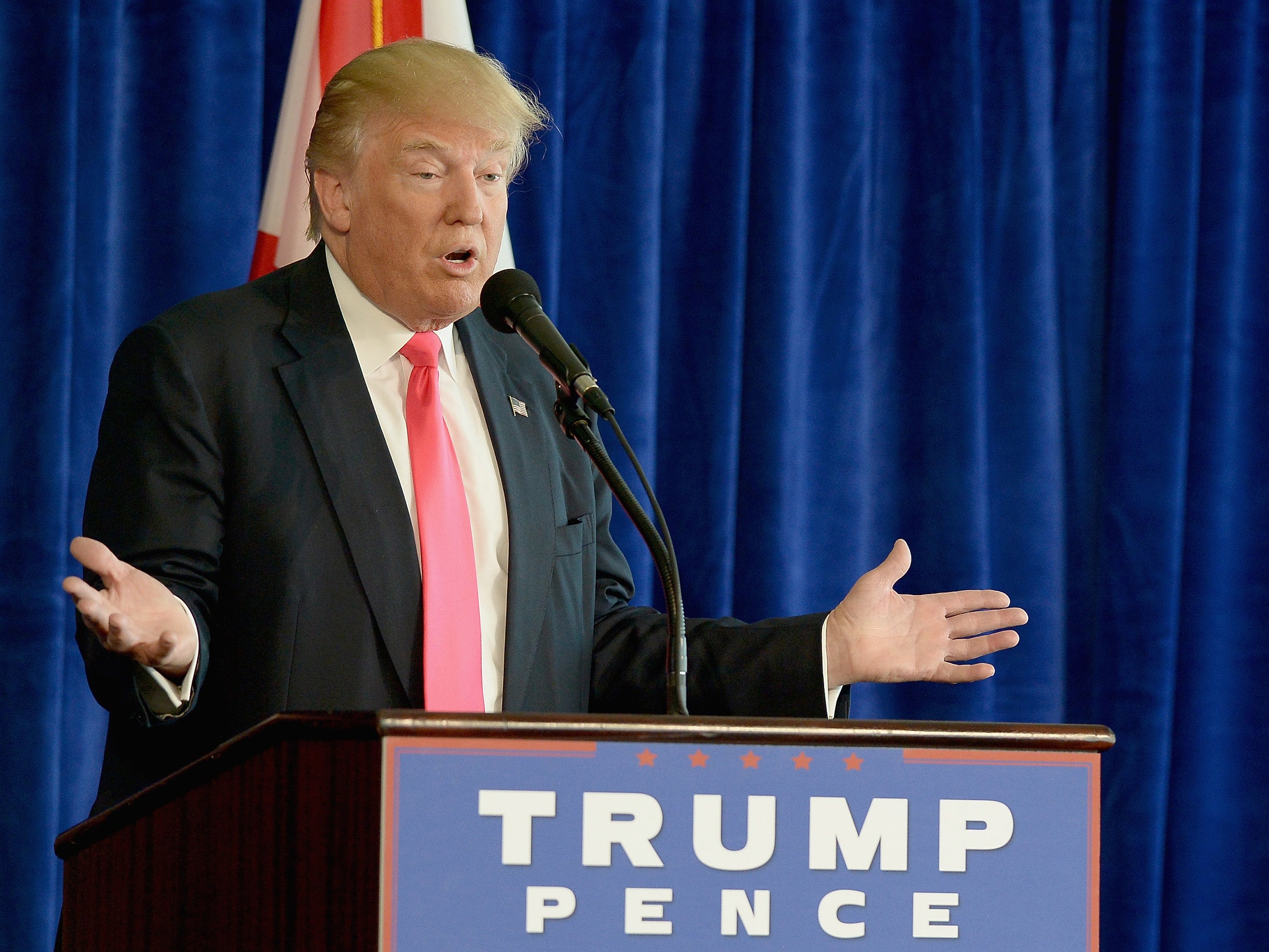How much power will Donald Trump really have?
When Trump inherits the powers of the presidency, there will be effectively no limitations on his authority to launch nuclear strikes

Your support helps us to tell the story
From reproductive rights to climate change to Big Tech, The Independent is on the ground when the story is developing. Whether it's investigating the financials of Elon Musk's pro-Trump PAC or producing our latest documentary, 'The A Word', which shines a light on the American women fighting for reproductive rights, we know how important it is to parse out the facts from the messaging.
At such a critical moment in US history, we need reporters on the ground. Your donation allows us to keep sending journalists to speak to both sides of the story.
The Independent is trusted by Americans across the entire political spectrum. And unlike many other quality news outlets, we choose not to lock Americans out of our reporting and analysis with paywalls. We believe quality journalism should be available to everyone, paid for by those who can afford it.
Your support makes all the difference.When Donald Trump takes the oath of office on Friday, he will inherit a wide range of powers as the chief executive of the most powerful country in the world. The powers of the presidency were originally defined by the US Constitution and have been both expanded and clarified as the US has grown and changed. They are broad but subject to significant political, legal and logistical constraints. Here are six of the most important powers that President Trump will be taking on.
Nuclear weapons
The President has sole control over the US nuclear arsenal, which is distributed between land-based intercontinental ballistic missiles, submarine-launched ballistic missiles and bombs carried by fighter and bomber aircraft.
The nuclear command and control system was designed for rapid response in the event of a full-scale war with the Soviet Union, so while numerous checks were built into the system to prevent accidental launch or sabotage, there are effectively no limitations on a President’s authority to launch nuclear strikes.
Intelligence and counter-terrorism operations
The US intelligence apparatus is the world’s largest – including the CIA, the NSA and numerous less-well-known agencies with a huge range of data-gathering, analytical and operational capabilities. They all report to the President via the Director of National Intelligence. Congress and elements of the judiciary exercise oversight, but the high degree of secrecy inherent to these operations means that the president and their appointees have significant discretion over the priorities and targeting of intelligence operations.
The intelligence community – particularly the CIA – is also empowered to take direct action under presidential directive in some circumstances; including lethal actions such as its drone programme.
Trade Policy
The President has fairly wide (but not unlimited) authority to raise and lower trade barriers and negotiate trade agreements. Mr Trump has suggested that he might rip up the North American Free Trade Agreement, which created a free-trade area between Mexico, the US and Canada, though the first step is likely to be a renegotiation between the three countries. He will certainly halt any progress on the existing Trans-Pacific Partnership and Transatlantic Trade and Investment Partnership agreements.
Staffing the federal bureaucracy
The executive branch, which the President heads, consists of virtually all of what people think of as the government – everything from the military to the National Parks Service to NASA (though the majority of ‘government employees’ in the US – teachers and police officers for example – are employees of their respective states, not the federal government).
The President appoints the top echelons (cabinet secretaries, under-secretaries, administrators of independent departments, etc.), and through those choices exercises significant control over the operations of the entire federal machinery.
Signing or vetoing legislation
The President must sign any piece of legislation passed by both houses of Congress in order to make it into a law. He can also veto legislation, unless it is passed with a two-thirds majority of both houses (a rare occasion, especially in an era where bipartisan cooperation is unusual).
The ‘bully pulpit’
The president of the United States is automatically the most recognisable political figure in the world. Their public statements have enormous consequences – they can deter or invite action by others and set the course of major world events. The US government has a relatively powerful public information apparatus at its disposal, but it is almost beside the point given that even a tweet from the President will be given the widest possible distribution and subjected to exacting analysis worldwide.
Join our commenting forum
Join thought-provoking conversations, follow other Independent readers and see their replies
Comments